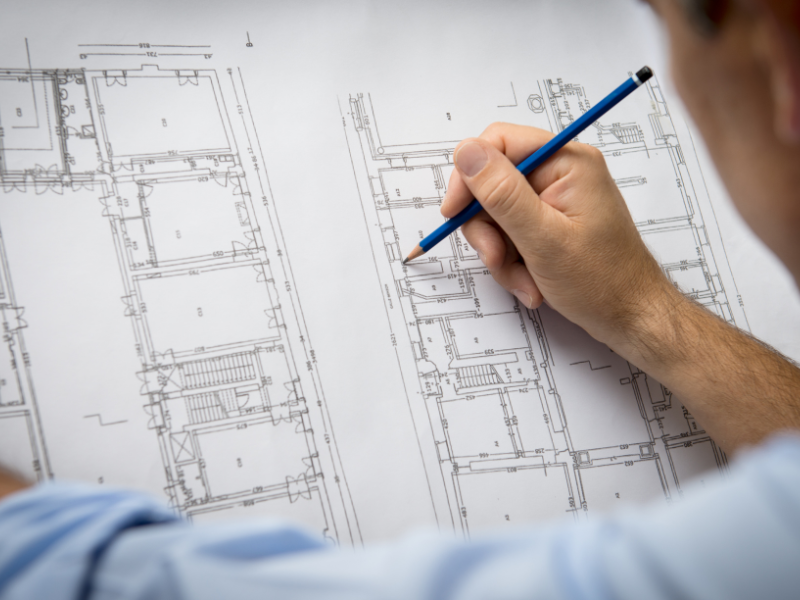Architect Salary Report by Region and Experience
Wiki Article
Recognizing the Diverse Profession Paths Available for Aspiring Architect
As an ambitious Architect, you have a world of occupation courses waiting for you. Whether you're drawn to standard style or the nuances of sustainable layout, there's a niche that lines up with your passions.Traditional Design: Creating Frameworks and structures
Traditional style concentrates on designing buildings and structures that mix functionality with visual appeal. As you explore this field, you'll appreciate the complex equilibrium in between kind and objective. You'll learn to draw inspiration from historical styles, integrating aspects like balance, materials, and workmanship. Your styles can mirror social heritage, showcasing regional traditions while satisfying modern demands.You'll develop abilities in composing, model-making, and website analysis, permitting you to envision and interact your ideas efficiently. Engaging with clients, you'll require to comprehend their vision and equate it into feasible layouts.
Moreover, developing codes and sustainability practices are important in your work, guaranteeing your frameworks are eco friendly and safe. As you expand in your profession, you'll find chances in domestic, business, or even repair tasks, each offering distinct challenges. Welcoming standard architecture leads the way for a satisfying career that admires the past while shaping the future.
Urban Planning: Shaping Neighborhoods and Public Spaces
As an aspiring Architect, you can play an important role as a metropolitan coordinator, transforming how communities interact and function. By using community involvement strategies, you'll ensure that homeowners have a voice in shaping their environment. Plus, incorporating sustainable layout concepts will aid create spaces that not only fulfill today's needs but also protect the future.Role of Urban Planners
While numerous might think of architects as the sole visionaries behind structures, city organizers play an important role in shaping the more comprehensive landscape of areas and public rooms. By working together with numerous stakeholders, you'll assist create parks, transportation systems, and residential areas that advertise social interaction and ease of access. Your know-how in spatial style and neighborhood dynamics permits you to imagine future growth while preserving social heritage.Neighborhood Engagement Strategies
Reliable neighborhood interaction strategies are important for city coordinators to assure that the voices of citizens are listened to and valued in the preparation procedure. To foster significant discussion, you should prioritize open discussion forums and workshops where neighborhood participants can express their concepts and worries. Usage surveys and social media to reach a wider audience, making sure varied perspectives are included. Collaborating with local organizations can enhance trust and promote much deeper connections. It is necessary to provide clear details regarding decision-making processes and suggested jobs, allowing residents to really feel educated and empowered. By actively integrating and listening responses, you'll produce areas that reflect the community's demands, eventually bring about even more lasting and effective metropolitan settings. Accept transparency and continual discussion for enduring effect.Sustainable Style Concepts
When designing metropolitan rooms, incorporating sustainable layout concepts is important for developing environments that prosper both environmentally and socially. Take into consideration incorporating eco-friendly areas, like parks and gardens, to boost biodiversity and enhance air quality.Creating with water preservation in mind is likewise key-- assume regarding rain yards and absorptive surfaces to take care of stormwater. Including community participants throughout the planning procedure assurances that the areas you create fulfill their requirements and encourage social communication. By accepting these principles, you'll add to lively, sustainable metropolitan landscapes that benefit every person.

Landscape Architecture: Developing Lasting Outdoor Settings
As you check out landscape design, you'll find important layout concepts that create beautiful and useful outside areas. Sustainable techniques play an important role in making certain these environments thrive while decreasing ecological influence. Plus, you'll find a variety of career possibilities that permit you to make a genuine difference in how people engage with nature.Style Concepts in Landscape
Comprehending design concepts in landscape style is necessary for developing sustainable exterior settings that harmonize with nature. You'll require to ponder aspects like proportion, scale, and equilibrium to ensure your layouts feel natural and welcoming. Additionally, pay focus to seasonal changes, creating with products that complement the surroundings year-round.Lasting Practices Overview
Sustainable techniques in landscape architecture not only concentrate on looks but likewise focus on eco-friendly health and source preservation. By integrating native plants, you enhance biodiversity and minimize the demand for chemical fertilizers and pesticides. Executing reliable watering systems aids conserve water and reduces overflow, securing neighboring communities. You can create rooms that advertise dirt wellness, such as using organic materials and practicing permaculture principles. Additionally, incorporating eco-friendly facilities, like rain gardens and porous pavements, aids in stormwater management and reduces urban heat. When you create outdoor environments with sustainability in mind, you contribute to a healthier planet and provide rooms that cultivate area link. Inevitably, these methods ensure your designs benefit both individuals and the environment for years ahead.Profession Opportunities Exploration
With a strong foundation in lasting techniques, landscape design offers a selection of profession courses that enable you to make a purposeful impact on the atmosphere. Urban organizers commonly work together with landscape engineers to develop green spaces in metropolitan setups, enhancing city livability. If you're enthusiastic regarding education, take into consideration coming to be a landscape design educator, motivating future generations.Sustainable Design: Focusing on Eco-Friendly Practices
As you discover your occupation in architecture, welcoming green techniques can set you apart in a competitive field. Lasting style concentrates on creating buildings that decrease environmental influence while improving passenger health. By integrating renewable products, energy-efficient systems, and lasting building techniques, you'll add to a greener future.Beginning by gaining expertise of environment-friendly qualifications like LEED or BREEAM, which can strengthen your credentials. Consider how all-natural light, air flow, and thermal performance can maximize design. Work together with designers and environmental consultants to innovate options that minimize waste and save sources.
Don't fail to remember the relevance of area involvement-- appealing local stakeholders can motivate styles that harmonize with the environment. As customers increasingly prioritize sustainability, your experience in environmentally friendly practices will certainly not only draw in tasks but additionally Continue meet your interest for liable style. Embrace this critical facet of the career, and see your occupation thrive.
Historic Conservation: Protecting and Recovering Cultural Heritage
While you begin on your building trip, think about the vital role of historical conservation in keeping our social heritage. This area focuses on the protection and remediation of substantial structures, websites, and frameworks that inform the tales of our past. By taking part in historical conservation, you'll aid protect the building tradition that shapes area identification.As a historic conservation Architect, you'll analyze historical value and assess the problem of structures. You'll function closely with preservationists and historians to guarantee authentic restoration methods see are used. This occupation course allows you to blend creativity with research study, enabling you to make options that value original materials and workmanship.
Your work not just contributes to sustainability by reusing existing buildings yet additionally cultivates a feeling of satisfaction within neighborhoods. Welcoming this course will assist you end up being a guardian of background, maintaining the stories and appearances that enhance our lives.
Interior Design: Enhancing Indoor Spaces
Historic preservation and interior architecture both share a dedication to enhancing the built atmosphere, yet they concentrate on various facets. While historic preservation stresses preserving a structure's cultural and historic value, indoor design nos in on maximizing indoor rooms for capability and aesthetics.As an aspiring Architect, you'll discover that interior design permits you to blend imagination with technical abilities. You'll create rooms that not just look great but likewise promote convenience and effectiveness. This area includes recognizing how light, color, and products engage within an area, impacting mood and use.
You'll work with various tasks, from property homes to business workplaces, making certain that each environment meets the requirements of its passengers. By prioritizing customer experience, you can transform interiors into practical and inspiring areas, making a significant influence on how people engage with their surroundings. Embrace the possibility to enhance indoor settings and form the means individuals live and work.
Industrial Layout: Merging Capability With Looks
Industrial layout plays an essential duty in creating products that perfectly mix aesthetics with performance, ensuring that what you make use of daily is not only aesthetically appealing yet likewise useful. As an aspiring Architect, you can immerse on your own in this field, concentrating on designing whatever from furnishings to consumer electronics. Your job includes comprehending user requirements, materials, and manufacturing processes, allowing you to produce innovative solutions that improve daily experiences.In commercial style, you'll frequently collaborate with suppliers, designers, and marketers, making certain that your styles are not just lovely however also possible. This job course uses a dynamic setting where creative thinking meets usefulness, making it a fulfilling choice for architects interested in shaping the items of tomorrow.
Regularly Asked Concerns
What Educational Qualifications Do I Need to End Up Being an Engineer?
To become a designer, you'll require a specialist level in architecture, generally a Bachelor's or Master's. Furthermore, you'll have to finish a teaching fellowship and pass the Architect Enrollment Assessment to practice look what i found legally.Exist Accreditation Demands for Various Architectural Occupation Paths?
Yes, there're qualification demands for various architectural paths. Architect. You'll need to pass exams, total internships, and occasionally seek specialized training, depending upon your chosen focus, like landscape style, metropolitan layout, or historic conservationWhat Software Program Skills Are Essential for Engineers Today?

Exactly How Can I Gain Practical Experience While Examining Architecture?
You can gain practical experience by interning at building companies, joining layout competitions, volunteering for area projects, or collaborating with schoolmates on real-world assignments. These possibilities enhance your abilities and construct valuable connections in the sector.What Work Opportunities Exist Outdoors Typical Design Firms?
You can check out different work opportunities outside conventional architecture companies, like city preparation, interior decoration, landscape design, building monitoring, realty advancement, and even roles in sustainability consulting. Each deals special challenges and benefits.Whether you're drawn to standard style or the nuances of lasting layout, there's a specific niche that aligns with your interests.When developing city spaces, incorporating sustainable style principles is important for developing atmospheres that grow both ecologically and socially.As you discover landscape style, you'll uncover vital layout concepts that develop attractive and useful exterior rooms.Understanding layout concepts in landscape architecture is crucial for creating sustainable outdoor environments that balance with nature.In commercial design, you'll frequently team up with producers, engineers, and online marketers, making certain that your styles are not just beautiful but additionally practical.
Report this wiki page